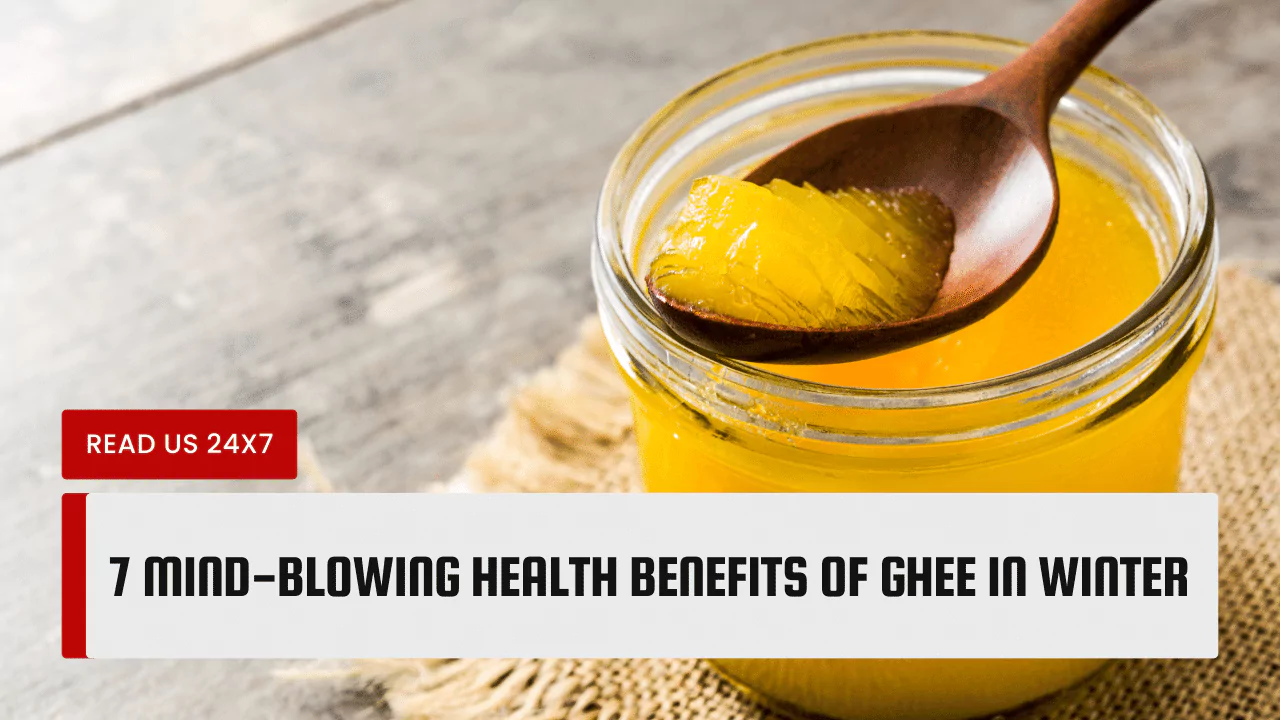Ghee is a form of clarified butter that is extensively utilized in Indian cuisine. It is made by simmering butter and removing the milk solids, leaving behind a golden liquid that has a rich and nutty flavor. Ghee is not only delicious but also has many health benefits, especially in winter. Here are seven mind-blowing reasons why you should include ghee in your winter diet.
The Benefits of Ghee in Winter
- Provides warmth and comfort: Ghee is a natural source of heat and energy for the body. It helps to keep you warm and cozy in the cold weather. Ghee also stimulates the metabolism and improves blood circulation, which can prevent chills and numbness.
- Nourishes the body with essential vitamins: Ghee is rich in fat-soluble vitamins A, D, E, and K, which are vital for the immune system, bone health, vision, skin, and hair. These vitamins are especially important in winter when sunlight is scarce and the risk of infections is high.
- Aids in digestion and treats colds and coughs: Ghee has anti-inflammatory and anti-microbial properties that can help to soothe the digestive tract and fight off germs. Ghee also lubricates the throat and lungs, which can ease the symptoms of colds and coughs. Ghee can also be mixed with honey, ginger, pepper, or other spices to make a natural remedy for respiratory ailments.
- Moisturizes the skin from within: Ghee is a natural moisturizer that can hydrate and nourish the skin from the inside out. Ghee can prevent dryness, cracking, itching, and flaking of the skin, which are common problems in winter. Ghee can also improve the complexion and glow of the skin by enhancing the production of collagen and elastin.
- Enhances flexibility: Ghee can help to lubricate the joints and muscles, which can improve the flexibility and mobility of the body. Ghee can also reduce stiffness, pain, and inflammation in the joints, which can be aggravated by cold weather. Ghee can also promote the health of the tendons and ligaments, which can prevent injuries and sprains.
Ways to Incorporate Ghee into Winter Diet
There are many ways to enjoy ghee in your winter diet. Here are some of the most common and delicious ones:
- On roti or bread: Ghee can be spread on roti, paratha, naan, bread, or toast as a simple and satisfying snack. Ghee can also be used to make ghee roti, which is a crispy and flaky flatbread that can be eaten with any curry or dal.
- In cooking vegetables: Ghee can be used to sauté, roast, or fry vegetables, such as potatoes, carrots, cauliflower, peas, beans, spinach, etc. Ghee can enhance the flavor and texture of the vegetables, as well as increase their nutritional value.
- In soups or dals: Ghee can be added to soups or dals, such as tomato soup, lentil soup, mung dal, masoor dal, etc. Ghee can make the soups or dals more creamy and rich, as well as add a layer of aroma and taste.
- As a topping or dip for snacks: Ghee can be drizzled on popcorn, nuts, seeds, dried fruits, etc. as a healthy and tasty snack. Ghee can also be mixed with herbs, spices, cheese, yogurt, etc. to make a dip for chips, crackers, breadsticks, etc.
- Mixed with raw turmeric for added benefits: Ghee and raw turmeric are a powerful combination that can boost immunity and fight infections. Ghee can help to dissolve and absorb curcumin, which is the active ingredient in turmeric. Ghee and turmeric can be mixed together and consumed as a paste, or added to milk, tea, coffee, etc.
Why Ghee is Recommended in Ayurveda?
Ghee is considered one of the most beneficial foods in Ayurveda, the ancient system of medicine and wellness from India. According to Ayurveda, ghee has the following benefits:
- Anti-inflammatory properties: Ghee can reduce the inflammation in the body, which can cause various diseases and disorders. Ghee can also balance the doshas, which are the three energies that govern the body, mind, and spirit. Ghee can pacify the vata dosha, which is responsible for movement and dryness, and the pitta dosha, which is responsible for heat and metabolism.
- Boosts absorption of vitamins: Ghee can enhance the absorption of fat-soluble vitamins, such as A, D, E, and K, which are essential for the health and functioning of the body. Ghee can also increase the bioavailability of other nutrients, such as minerals, antioxidants, phytochemicals, etc. that are present in the food.
- Protects heart health: Ghee can lower the levels of bad cholesterol (LDL) and triglycerides, which can clog the arteries and cause heart problems. Ghee can also raise the levels of good cholesterol (HDL), which can protect the heart and prevent cardiovascular diseases.
- Stable fat for cooking: Ghee has a high smoke point, which means it can withstand high temperatures without burning or breaking down. Ghee can also resist oxidation, which means it does not produce harmful free radicals that can damage the cells and cause aging and diseases. Ghee is, therefore, a safe and stable fat for cooking, especially in winter when the food needs to be cooked for longer and at higher temperatures.



